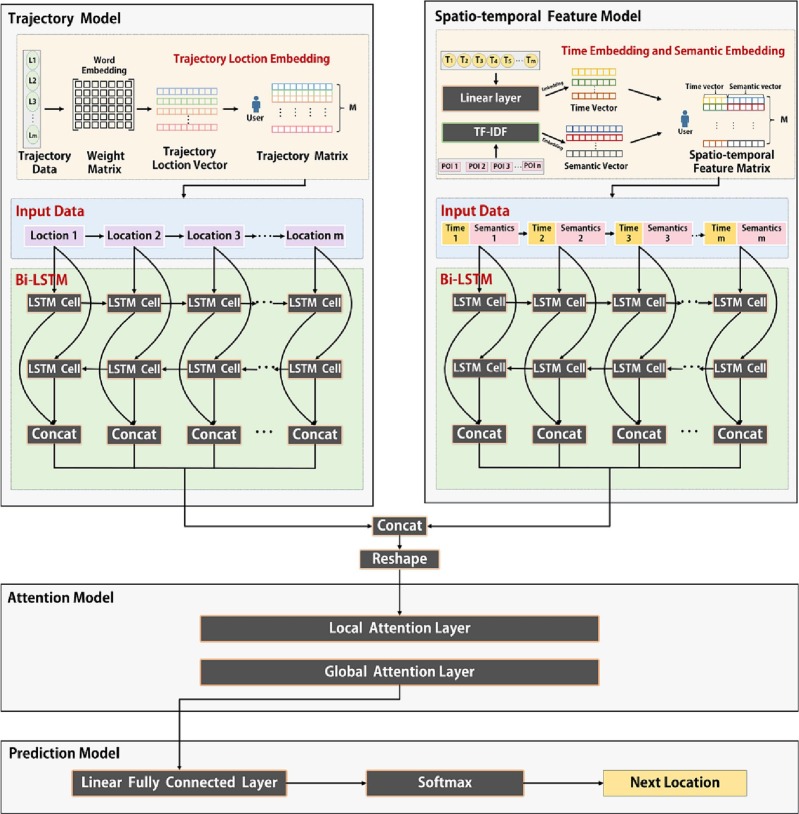Title: Predicting mobile users' next location using the semantically enriched geo-embedding model and the multilayer attention mechanism

Abstract
Predicting the next location of human mobility and its semantic information can support recommendations for location-based services and trajectory mining, such as human mobility pattern recognition and sequential anomaly detection. Previous studies have ignored the implicit correlation between location and spatiotemporal information thereby limiting the model performance in terms of location prediction accuracy. In this study, we propose a GEMA-BiLSTM (Geographical Embedding and Multilayer Attention -Bidirectional Long Short-Term Memory) model to predict the next-location in users' mobility. The model combines location and spatiotemporal information to extract the semantics of human mobility. The results show that the model can accurately predict the next location with a high accuracy of 87.63%. Compared with BiLSTM-CNN, LSTM, CNN, and Markov, the location prediction accuracy of the model improved by 2.28%, 9.72%, 11.53%, and 17.64%, respectively. In addition, the model has the highest semantic prediction accuracy (75.35%). Compared with the BiLSTM-CNN model, the our method improves the semantic prediction accuracy for residential and industrial function areas by 4.79% and 5.37%, respectively. The accuracy of location prediction for different time periods indicates that the next location of human activity during morning rush and evening rush hours is the most difficult to predict, which corresponds to the increase in human travel demand. Moreover, weekday human activity patterns indicate that the commercial area is still very active at night, which may be linked to nighttime economic policies. This study could improve the accuracy of recommendations for location-based service applications.
Keywords
Location prediction;
Semantic features;
Geo-embedding;
Multilayer attention;
Human activity pattern
Full Text Download
Computers, Environment and Urban Systems
Q.E.D.









